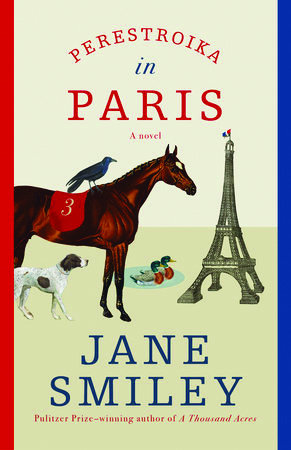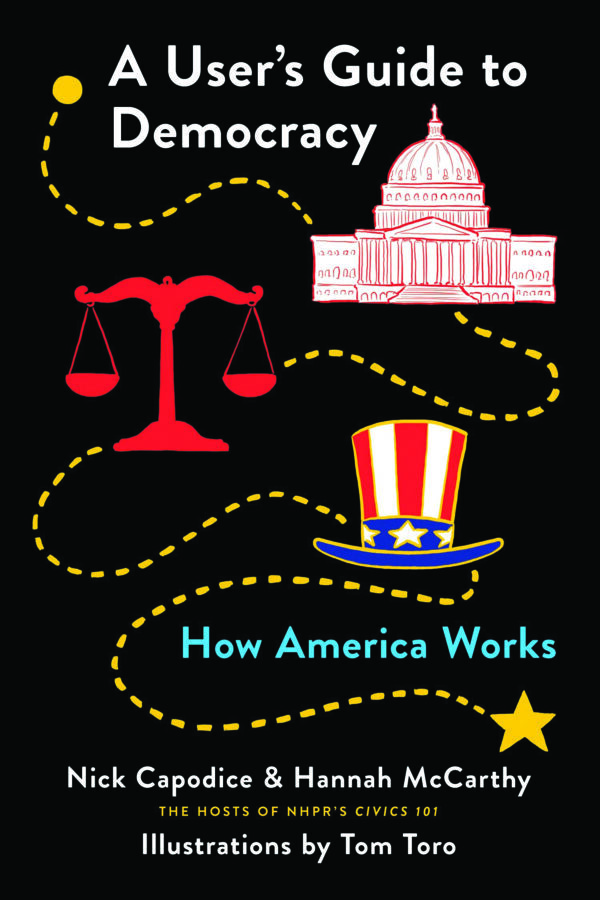The Office of Historical Corrections, by Danielle Evans (Riverhead, 288 pages)
The late science fiction writer Harlan Ellison once said that he went to bed angry every night and woke up every morning angrier. Like-minded scribes have said that should be true of all writers, and there has been plenty of anger vented in books this year, particularly on the subject of race and injustice.
So it’s a pleasure to come across a collection that makes its points in a quiet and even understated tone, in language that reads like prose but feels like poetry.
Danielle Evans is that good. Her second book, The Office of Historical Corrections, comprises a titular novella and six short stories that swirl around race, poverty, family and culture. The plots are riveting; the characters, so real they try to escape the page. Within the stories are subtle commentary on issues of the day. The only thing that’s missing is a pandemic, and that’s a good thing.
Evans is a graduate of the storied Iowa Writers Workshop, but hers is the sort of talent that isn’t taught but bestowed. Take, for example, the descriptions in “Boys Go to Jupiter,” a story about a college student, Claire, who becomes embroiled in controversy after a date posts a picture of her wearing a bikini emblazoned with Confederate flags on social media.
The present drama is entwined with a story from the girl’s past, during which she grew up best friends with a Black girl whose family came from South Carolina. “The whole family,” Evans writes, “talks with drowsy vowels and an occasional drag that gives some words— her name, for example— a comforting dip in the middle. In Mrs. Hall’s mouth, Claire’s name is a tunnel from which a person can emerge on the other side.”
At first Claire is bewildered by the reaction to a swimsuit that she didn’t buy, made public by a post she didn’t make, but then increasingly she becomes angry at the dorm mate who brought attention to it. In short order, she is championed by libertarians defending free speech and by supporters of the Confederacy, who urge her to defend her “southern” heritage, even though she was only in the South to visit her father and her relatives had never lived south of northern Virginia.
There are comic undertones to this potent story, even as it becomes more disturbing and complex.
Similarly, in “Alcatraz,” Evans mines family history for poignant exploration of injustice and loss.
The narrator has recently moved near the infamous prison, where her great-grandfather was confined when Alcatraz was a military prison used to house people for crimes such as desertion during the Civil War.
The narrator’s mother has spent much of her life trying to clear the name of her grandfather, who had been ultimately cleared of the accusations against him but was unable to escape the stigma and trauma of having been at Alcatraz.
She invites her mother, and some other family members, to take a tour of the facility, hoping it will provide some sort of closure for the family. When the mother arrived, Evans writes, she “was dressed like an actress auditioning for the part of my mother in a movie.”
“A different daughter might have been reassured, but I looked at my mother and saw a person directing all of her energy toward being outwardly composed because the inside was a lost cause,” Evans writes.
The novella, “The Office of Historical Corrections,” like the short stories, punches above its weight in Orwellian form.
It’s about an America that has put into place a federal agency charged with ferreting out truth, and sending government workers to issue “corrections stickers” when they come across statements or claims that are counter to the official truths.
The narrator, Cassie, was a college history professor before she joined the agency, whose origins are explained this way:
“An ambitious freshman congresswoman demanded funding to put a public historian in every zip code in the country, a correction for what she called the contemporary crisis of truth. It was pitched as a new public works project for the intellectual class, so many of us lately busy driving cars and delivering groceries and completing tasks on demand to make ends meet. Government jobs would put all those degrees to work and be comparatively lucrative.”
Sometimes the corrections are relatively small and easily proven, such as the origin of Juneteenth, which a cake shop has gotten wrong in one of its promotions. But she is ultimately drawn into a more serious case that involves the purported death of a Black man who started a business in an all-white town in Wisconsin. The business had been set on fire one night, and the owner was said to have died in the blaze. But the accuracy of the plaque outside the site came to the attention of another agency official who had issued a correction, beginning a series of events that Cassie is called upon to unravel.
Perhaps the most memorable of the collection is the story that precedes the novella. “Anything Could Disappear” reflects the sub-surburbia desperation that is often evident on a Greyhound bus. The main character, Vera, is traveling from Missouri to New York when another traveler deposits a 2-year-old on the seat next to Vera, saying “Keep an eye on him, will ya, hon?”
The woman then disappears, leaving Vera — who for unrelated reasons has a desire not to be near police — unsure of what to do when the bus reaches its destination. She winds up keeping the child with her for a few days, which turns into a few months, as Vera builds a life much different than she expected. Eventually, however, she learns that the child’s father is looking for him, and has to make an agonizing decision about what to do, not just with the child but with her life.
Mark Twain famously said he could have written a shorter letter to a friend if he’d had more time; it can be difficult for even the most celebrated writers to pack profundities in a small space. Evans does so beautifully here. A
BOOK NOTES
The Great Reset, according to the World Economic Forum, is the opportunity afforded by Covid-19 to recalibrate the world economy. While conservatives aren’t happy with the initiative, “the great reset” is a catchy phrase that holds more appeal than the tired old “new year’s resolution.”
If you’re looking to launch your own great reset in January, the publishing industry is here to help. Here are a couple of recent and forthcoming titles intended to make you be a better version of yourself in 2021:
Badass Habits, by Jen Sincero (Penguin Life, 256 pages): Here in the fourth book in Sincero’s “badass” series, she promises to help you “cultivate the awareness, boundaries, and daily upgrades you need to make [badass habits] stick.”
The Dry Challenge, by Hilary Sheinbaum (Harper Design, 224 pages): For anyone considering Sober January, as is the rage, Sheinbaum makes the case for going alcohol-free for a month and provides tips on how to effectively “lose the booze.”
Clean Mama’s Guide to a Peaceful Home, by Becky Rapinchuk (HarperOne, 240 pages): “How to establish systems and rituals to transform your home into a clean, organized, and comfortable space for you and your family,” the publisher says.
Keep Sharp: Build a Better Brain at Any Age, by Dr. Sanjay Gupta (Simon & Schuster, 336 pages): CNN’s chief medical correspondent, a neurosurgeon, provides a shape-up plan for your brain.
And, for the obligatory “lose weight” resolution, pandemic version: Fast This Way, by Dave Asprey (Harper Wave, 288 pages), notes on losing weight, getting smarter and living “your longest, healthiest life,” from a Silicon Valley entrepreneur and “professional biohacker.
Books
Author events
• KJ DELL’ANTONIA Author presents The Chicken Sisters. Hosted by Gibson’s Bookstore in Concord. Online, via Zoom. Wed., Jan. 6, 7 p.m. Registration required. Visit gibsonsbookstore.com or call 224-0562.
• K WOODMAN-MAYNARD Author presents graphic novel adaptation of The Great Gatsby. Hosted by Gibson’s Bookstore in Concord. Online, via Zoom. Thurs., Jan. 7, 7 p.m. Registration required. Visit gibsonsbookstore.com or call 224-0562.
• SUSAN CONLEY Author presents Landslide. Hosted by Gibson’s Bookstore in Concord. Online, via Zoom. Thurs., Feb. 11, 7 p.m. Registration required. Visit gibsonsbookstore.com or call 224-0562.
• THERESA CAPUTO the star of TLC’s Long Island Medium will present “Theresa Caputo: The Experience Live” at the Capitol Center for the Arts (44 S. Main St. Concord, ccanh.com) on Wed., April 7, 7:30 p.m. Tickets start at $39.75 (with option for a VIP Photo Op for an additional $49.95).
Book Clubs
• BOOKERY Online. Monthly. Third Thursday, 6 p.m. Bookstore based in Manchester. Visit bookerymht.com/online-book-club or call 836-6600.
• GIBSON’S BOOKSTORE Online, via Zoom. Monthly. First Monday, 5:30 p.m. Bookstore based in Concord. Visit gibsonsbookstore.com/gibsons-book-club-2020-2021 or call 224-0562.
• TO SHARE BREWING CO. 720 Union St., Manchester. Monthly. Second Thursday, 6 p.m. RSVP required. Visit tosharebrewing.com or call 836-6947.
Writing
• POSTCARD POETRY CONTEST Peterborough Poetry Project seeks submissions of original poems written on picture postcards for an upcoming anthology. Deadline is Dec. 31. Visit peterboroughpoetryproject.org/contests for more information.
• CALL FOR BLACK WRITERS New Hampshire-based theater company and playwright collective New World Theatre announces an open call to Black writers to submit monologues that reflect their personal experience of living while black, to be published in an anthology titled “08:46.” The deadline for submissions is Jan. 1, 2021. Visit newworldtheatre.org/08m46s.






